The Blog
Recently Featured
All Blogs
How to Find the Right Therapist
“You can’t stay in your corner of the Forest waiting for others to come to you. You have to go to them sometimes.”
Today, we’re getting real practical. Let’s be honest: therapy feels a bit odd, awkward, and down right uncomfortable in the first place. How in the world does one go about finding a therapist who will not only make the first wobbly steps somewhat bearable, but also turn out to be someone we actually like? And yes, contrary to popular belief, you’re going to need to like your therapist in order to trust them, let alone experience growth and healing.
I had this conversation with my therapist a few weeks back. Whereas I don’t believe we’re always supposed to be “in therapy,” I’ve always valued the sacred space of therapy as a sounding board and a refiner’s fire so to speak. In other words, no matter what season I’m in, I depend on my therapist to challenge me, call my BS (bullshit and blindspots), and serve as a loving mirror when the reflection I see is less than compelling.
Whether you’re in a tight transition or a season of loss, it’s imperative to reach out and find the help you need. As someone who’s sat in therapy far longer as a client than a therapist, I relate to the struggle of finding the right fit. It’s real. Today, I want to unpack this process as much as possible. You’ve already got enough on your plate.
Prep-work
Before launching on your quest, there’s some necessary prep-work. Often times, it can be the most difficult part of the process.
The first step is always to get still, spend about 10-15 minutes alone, and ask yourself what it is you’re needing in therapy. This may seem obvious, but it’s not. Oftentimes, we’re operating in crisis. The survival strategies involved in crisis don’t provide much of a margin for conscious self-reflection. It’s important to give yourself a small window of time and ask yourself three questions: a) what you need and b) what you want from therapy c) as well as, what obstacle ccurrently stands in the way of getting therapy? I find it easiest to write this pertinent information down in a journal or notebook. This content will serve as a roadmap for the journey ahead.
Once you’ve taken the time to explore these questions, here are five helpful guidelines to follow:
The Quest
Logistics- Let’s get the unsexy bit out of the way. First things first, you need to get clear on practical parameters such as location, budget, male vs. female, type of therapy (individual/couples/family), availability, and whether or not they offer a sliding scale or the opportunity to use insurance. These will steer the next several steps accordingly. It’s worth noting that while some practitioners do accept insurance, some insurance policies only allow for a minimum amount of sessions they will cover, making ongoing therapy an out-of-pocket expense. Again, all good things to consider and inquire about based on your needs and privacy preferences. Good Therapy and Psychology Today have wonderful directories and often provides answers to several of these basic questions.
Referral- Ideally, finding referrals from those who know you personally is the best place to start be it an existing physician, family member, pastor, or friend. If possible, I always encourage people to start with their current sphere of influence when looking for therapist recommendations. This is where I’ve always had the most luck.
Style- Just like with dating, you’re not for everyone. No matter how fabulous you are, you won’t be compatible with everyone attractive you meet (*sigh). I tell people this up front in therapy all the time. I can’t help everyone and am quick to practice transparency when I feel another therapist might be more equipped to support someone with specific needs I don’t feel qualified to meet. Do you want a no-nonsense, directive approach in therapy or would you prefer a softer, more indirect style? (Or something in between? ) Do you seek a therapist who is faith-based? Do you appreciate someone of a specific age? These qualifiers will hopefully show up in the prep-work listed above.
Expertise- If you’ve done therapy before and know certain modalities or tools that work for you, it’s important to bring this insight into your search. Interviewing a handful of possible therapists is important so as to understand their approach and expertise. Do you want to explore the Enneagram in your work? Do you need a grief or addictions specialist? Do you prefer brain-based therapies such as EMDR or Brainspotting? Do you like talk-therapy or more of an experiential technique? Do you need group therapy in addition to individual and which therapists provide this?
Consult- Most therapist will offer a free 15-30 minute phone consult. You’re about to invest time and resources into the therapeutic process. It’s vital to understand a bit more about the experience, training, and approach to therapy they have. I always encourage this as sometimes we just need an opportunity to suss it out in a quick conversation. Email is a great starting point, however I always like to get a feel for communication style and energy on the phone. Having as many of the prior steps filled out is bonus so as to be able to clearly ask as many questions as possible. (Also worth noting, if you need to stay within a budget, therapists who are newer to the field or working towards licensure will often provide a sliding scale rate based on your income.)
And listen, often times this “pre-production” business is a luxury. Therapy is often a last resort as we find ourselves amidst chaos, crisis, and loss. In these times, simply taking the brave first step to start therapy with someone and trusting the process to unfold as it should is all we can do.
P.S. As a helpful checklist, I’ve posted The Cheatsheet: A no-hassle guide to finding the right therapist on my website! Click here to download a free guide.
Oh, P.S.S. This goes without saying, but I’d LOVE to serve as a resource for you on your quest. If you have questions for me, or need referrals, I’ve got some incredible ones for you. Please reach out.
Love & Gratitude,
Katie
Slowing Down to Go Further
“Almost everything will work again if you unplug it for a few minutes…including you.”
— Anne Lamott
We live in a culture that worships acceleration. More meetings, more content, more emails, more hustle, more ACTIVITY. And yet—so many of us are running on fumes, sprinting toward burnout in the name of productivity.
Here’s the truth I’m learning a lot about lately, in both my personal life and professional life: sometimes the fastest way forward is actually to slow down.
Slowing down isn’t laziness. It’s leadership. It’s wisdom. It’s saying, I value sustainability over speed. I want my next move to be from alignment, not anxiety.
It often starts with a simple—yet deeply uncomfortable—word: No.
No to the invitation that feels more obligatory than meaningful.
No to the opportunity that’s good on paper but out of step with your values.
No to the version of yourself that’s addicted to proving, pleasing, or performing.
When we press pause, we create space for clarity.
And clarity is everything.
This summer, I’ve been learning (again) that pause is not punishment—it’s permission.
Permission to re-root in what matters.
Permission to check in with the values I say I live by and ask myself if my calendar actually reflects them.
Permission to choose rest, to wander a little, to trust that my worth isn’t in how much I accomplish, but in how fully I show up—to my people, to my calling, and to myself.
In Enneagram language, each type has its own version of this work.
• Type Threes might need to slow down long enough to ask: Who am I when I’m not achieving?
• Nines may need to recognize that true rest requires engagement, not escape.
• Sevens might have to sit still in discomfort and trust that missing out can be just as rich. (Read: JOMO).
Slowing down invites us to recalibrate. To remember what’s essential and release what’s performative. It’s not easy work, but it’s holy work. It’s the kind of recalibration that brings us back into integrity—with our hearts, our bodies, our dreams.
So here’s your gentle invitation:
Press pause.
Say no.
Create space.
And trust that in doing so, you’re actually building the foundation for something deeper, more durable, and wildly more alive.
Because going further doesn’t mean going faster.
It means going truer.
This requires vision. And that always starts with slowing down.
Love & Gratitude,
Katie
⸻
Want more of this kind of soul-fueled reflection with a side of Enneagram wisdom? Join me for the Experiential Book Club this August—we’re reading The Let Them Theory by Mel Robbins and digging into what it means to let go so we can move forward with more freedom, clarity, and courage.
3 Myths About Self-Care (and #2 Might Surprise You)
“Without knowledge of self, there is no knowledge of God.”
— John Calvin
You would be shocked how many times I’ve heard these two responses to the question:
“How do you practice self-care?” In therapy. Here they are:
“What’s that?”
“Not very often. It feels selfish.”
Thankfully, if you’ve had these same reflexes, you’re not alone. There’s no shame. This just means we’re a little confused about our most important relationship: the one with ourself.
And I know what you’re thinking, “Spare me. Sounds so indulgent.”
However, do you expect your car to run on empty? Do you drive it around for months on end without gas or an oil change? I’m not even a car person, but I know to pay attention when that glorious red light signals E, nudging me to the nearest Twice Daily.
Let’s take it a step further. Do you expect your nearest and dearest relationships to thrive without an occasional phone call, text or date night reminding them of your love and appreciation?
Again, I’m guessing you’re pretty good at showing others you care. In fact, you’re probably great at it. Why? Because it’s socially accepted—even encouraged— and there’s an immediate reward on the other side. When we show intrinsic kindness to others, we are often appreciated back in some way.
So why do we neglect the one relationship that is the most constant and powerful of all? Make no mistake, I’m a person of deep faith who believes in and loves God. Yet, even John Calvin said, “Without knowledge of self, there is no knowledge of God.”
If we practice self-care and learn how to relate to ourselves in a kind and compassionate way, we are then primed to love the world in a more authentic, generous way.
If you’re still on the fence, I want to bust a few myths you might buy into that hold you back from practicing some necessary self-care:
1. Self-care is selfish:
This is a biggie. However, self-care is actually highly responsible, adult behavior. It’s learning to take care of yourself instead of obsessively tending to other people. In doing so, we learn that part of our job here on earth is to be responsible for our needs and desires instead of undermining them for the sake of others.
Right before take-off, the flight attendant does her thing and gives you instruction for safe travel. The part that always sticks with me is when she says to first put on your oxygen mask before that of others, even small children. We love others better when we start with ourselves.
2. Self-care takes too much time and effort
“I don’t have time for self-care.” I hear this a lot, especially from fellow mamas. I quickly retort, “Well do you have time for a mental or physical breakdown?” The answer is always no.
Self-care is made up of a loving mindset that allows for tiny, two-degree shifts in behavior towards yourself. I’m not asking you to soak in a bubble bath all day, I’m asking you to start regarding yourself with kindness. Start listening to your needs and take tiny actions to meet them.
3. I don’t deserve self-care
Friend, if this is your unconscious go-to belief, you may be carrying a heavy, hurtful burden. I know from experience there is another way. Perhaps the first place to start is a trusted friend or therapist to unpack past experiences or relationships that led you to believe this. Your birthright as a human being is to have needs and desires and get them met. You’re invited into the feast of wholeness just because you’re here and you’re you. Please reach out if you feel alone in this space.
Love & Gratitude,
Katie
P.S. The Self-Care Workshop is coming BACK Oct. 11th. Registration will open mid-August…mark your calendars now and stay tuned for early-bird pricing!!!
Let Them Already!
Let Them
-Mel Robins
I’ve always believed that the best kind of growth sneaks up on you.
Not the dramatic, lightning-strike kind (though we love a good plot twist), but the quiet, cumulative kind—the kind that happens when you’re paying attention, showing up, and giving yourself permission to be right where you are.
That’s why I’m so thrilled to announce that The Experiential Book Club is back this August—and this round, we’re reading a book that has stirred something fierce and freeing in so many: The Let Them Theory by Mel Robbins.
If you’ve ever felt exhausted from managing other people’s expectations, lost in the weeds of approval-seeking, or stuck in a cycle of over-functioning (hello, my fellow Enneagram 2s, 9s, and 8s), this one’s for you.
This isn’t your average book club.
Yes, we’ll read. Yes, we’ll discuss. But more than that—we’ll experience. We’ll drop into ourselves with mindfulness practices. We’ll explore the edges of our type structures. And we’ll hold space for one another to loosen our grip on the roles we’ve outgrown.
Here’s what you need to know:
We start in August and will meet virtually five times total—plenty of space to digest, reflect, and breathe between sessions.
We’re reading The Let Them Theory—a book that’s equal parts liberating and lovingly disruptive. If you’re ready to step back from the exhausting hustle of trying to be everything for everyone, Mel’s words will hit home.
We’ll weave in the Enneagram (because of course we will). You know me—I can’t not bring in the Enneagram. So expect each gathering to include gentle guidance through the lens of your type: how it reacts to boundaries, where it clings to control, and how it can soften into trust.
Whether you’re new to this community or have joined me in past rounds, this season of the book club feels like a bit of a homecoming. Less pressure, more presence. Less performance, more permission.
If that sounds like your kind of growth, I’d love for you to join us.
→ Click here to sign up
Let’s read, reflect, and reclaim—together.
Love & Gratitude (and a quiet little rebellion),
Katie
Why Enneagram Subtypes Matter … A Ton!
"The opposite of home is not distance but forgetfulness."
-Elie Wiesel
Have you ever struggled to pinpoint your Enneagram type or felt like it didn't quite capture who you are?
Same. And that's where subtypes come in.
In my experience, they're the secret sauce of the Enneagram—often overlooked but wildly illuminating. Recently, in "The Practice," my monthly Enneagram and self-care membership, we explored this exact topic in depth. Luckily for us, we learned from none other than Beatrice Chestnut, psychotherapist, master teacher, and the "Grande Dame of Subtypes" herself.
If you're unfamiliar with her work, Beatrice is the author of two cornerstone Enneagram books:
📘 The Complete Enneagram: 27 Paths to Greater Self-Knowledge
📘 The 9 Types of Leadership: Mastering the Art of People in the 21st Century Workplace
Both are must-reads. The Complete Enneagram, in particular, is one I return to again and again—it's part deep dive into subtypes, part Enneagram history lesson, and part transformation manual.
Like me, Beatrice is passionate about helping people use the Enneagram as a growth tool, not just a personality label. Our recent conversation was full of "gold," but I want to share three key takeaways that might just change how you see yourself (and your type).
1. Subtypes can clarify your core type.
Figuring out your Enneagram type isn't always straightforward. There are only nine types and billions of us, so it's no wonder we sometimes feel boxed in or misunderstood. That's where subtypes bring nuance. Each of the nine types has three instinctual variations, based on the dominant instinct driving our behavior:
Self-Preservation (security, comfort, safety)
Social (belonging, contribution, group dynamics)
One-to-One or Sexual (intensity, depth, connection)
That makes 27 distinct "flavors" of personality. Exploring the subtypes within the types you resonate with can bring clarity where there was once confusion.
2. Subtypes are a better growth tool than wings.
Let's be honest—wings are easier to talk about. They're physically adjacent to your core type and tend to feel more accessible. But Beatrice emphasized that wings are more of a "flavoring" that can change over time. Subtypes, on the other hand, point to our dominant instinctual drive and the way it interacts with our core emotional struggle (also known as the "passion" of your type). That combo is potent—it uncovers blind spots and stuck patterns we might not otherwise see.
3. Subtype = Instinct + Passion
This is the real magic. A subtype isn't just a self-preservation instinct or just a social instinct. It's the marriage of instinct and your type's core passion. For me, as a Type Four, my dominant instinct is self-preservation, and my passion is envy. That combo creates a very specific expression of Four—one that focuses more on safety, security, and moving beyond the ever-present suffering of Type Fours. In this way, Self-Preservation Fours can look a lot like Threes or Sevens.
Once you start seeing your subtype clearly, you begin to understand where your growth edge is. It's often where your dominant instinct is out of balance and where your type's passion is in the driver's seat.
If you want to go deeper into this kind of content, you're invited to join us in "The Practice." It's a soulful, practical space for integrating the Enneagram into your everyday life—with guest teachers like Beatrice, monthly live sessions, and guided practices for real transformation.
Subtypes might seem like a technical layer of the Enneagram, but in my experience, they're one of the most powerful keys to self-understanding and lasting change.
Love & Gratitude,
Katie


































